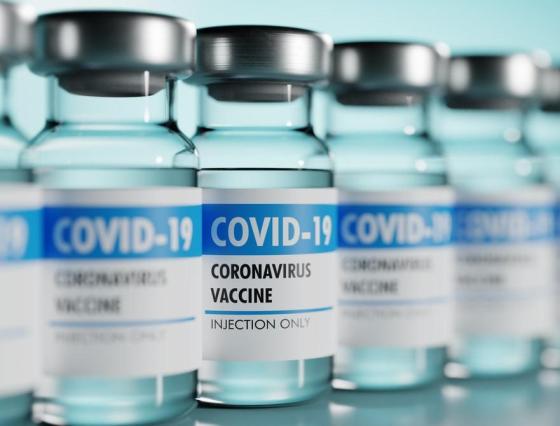Liberia: New COVID-19 Vaccine Roadmap Launched

An important strategy to develop broadly protective vaccines against continuously emerging SARS-CoV-2 variants and the threat of new coronaviruses that may cause pandemics in the future has been released.
Released by the Center for Infectious Disease Research and Policy (CIDRAP) at the University of Minnesota, USA on Tuesday, February 21, 2023, the strategy, officially known as Coronavirus Vaccines Research and Development (R&D) Roadmap, was developed at a result of an international collaboration of 50 scientific experts from all around the world. The experts, through the initiative, formed a united approach to make these urgently required vaccines a reality.
Funding for the roadmap was made possible by the Rockfeller Foundation and the Bill and Melinda Gates Foundation.
“The vaccines that we currently have for COVID-19 are the most important tool that we have in our battle against the pandemic,” said Dr. Charlie Weller, Head of Prevention, Infectious Diseases, at the Wellcome Trust.
“But we can do better – by developing vaccines that give us broader protection – protection against new variants, protection from coronaviruses that have not yet emerged but might cause the next pandemic.”
Weller said the world needs to discover new ways to deliver vaccines, such as skin patches or intranasal vaccines – and maybe even vaccines that could block transmission.
“This roadmap creates a structured plan that will give us the tools we need to better protect ourselves, our families and our communities around the world,” Weller said.
“The COVID-19 pandemic marks the third time in just 20 years that a coronavirus has emerged to cause a public health crisis,” said Michael T. Osterholm, Director of the University of Minnesota.
Osterholm, who is also Regents Professor and McKnight Presidential Endowed Chair in Public Health, said that the world must act now to develop better, longer lasting and more broadly protective vaccines.
“If we wait for the next event to happen before we act, we will be too late,” he warned. The COVID-19 pandemic taught us the hard lesson that we must be better prepared. Rather than waiting for a fourth coronavirus to emerge — or for the arrival of an especially dangerous SARS-CoV-2 variant. We must act now.”
The emergence of SARS-CoV-2 in 2019 was preceded by an epidemic in 2003 caused by a different coronavirus called SARS-CoV. Then, in 2012, the Middle East respiratory syndrome coronavirus, or MERSCoV, emerged. Coronaviruses can carry a high risk of death: for MERS-CoV, about one third of infections result in death, and approximately one in ten for SARS-CoV, although neither spreads easily from person to person.
In contrast, SARS-CoV-2, the virus that caused the COVID-19 pandemic, has a much lower fatality rate, but because it is so highly infectious between people, it led to more than 650 million confirmed cases and 6.6 million deaths worldwide by the end of 2022.
Even more concerning is the threat of a new coronavirus in the future that could be both highly transmissible and highly lethal. In addition, the emergence of new SARSCoV-2 variants may further jeopardize the significant protection provided by current vaccines against severe disease and death.
The CVR confronts these extraordinary threats with a detailed, comprehensive and coordinated plan to accelerate the development of long-lasting, broadly protective coronavirus vaccines capable of preventing severe disease and death, and potentially protect against infection and transmission. The CVR further emphasizes the goal that future broadly protective vaccines must be suitable for all regions worldwide, including remote areas and low- and middle-income countries.
“We may want to be done with coronaviruses, but coronaviruses are not done with us. At this point in history, complacency is our greatest enemy,” said Linfa Wang, PhD, professor with the Emerging Infectious Diseases Programme at Duke-NUS Medical School and executive director of the Program for Research in Epidemic Preparedness and Response (PREPARE), Singapore. “It is critical that we start now to develop vaccines that are future-ready for coronaviruses circulating in animals now, that might infect humans and cause pandemics in the future such as SARS-CoV-3 and beyond.”
The report highlights different paths to success. One approach could involve a stepwise process, starting with vaccines to protect against variants of SARS-CoV-2. Another approach could focus on vaccines capable of protecting against multiple types of coronaviruses, including those likely to spill over from animals to humans in the future.
The CVR summarizes key barriers and gaps and outlines specific goals and milestones for advancing broadly protective coronavirus vaccines. The work is organized into five topic areas: Virology, Immunology. Vaccinology, Animal and human infection models for vaccine research, and Policy and financing.
“Time and time again, we have seen that investment in science brings solutions: The COVID-19 pandemic galvanized the research community and advanced vaccine R&D efficiently and through broad collaborations,” said Bruce Gellin, MD, MPH, chief of global public health strategy at The Rockefeller Foundation. “The Coronavirus Vaccines R&D Roadmap charts a path to aggressively get ahead of new and emerging threats by prioritizing the development of vaccines that provide long-lasting immunity against a broad range of coronaviruses and are equitably available to all.”
“Now is the time not to sit back,” said Dan Barouch, MD, PhD, William Bosworth Castle Professor of Medicine at Harvard Medical School and director of the Center for Virology and Vaccine Research at Beth Israel Deaconess Medical Center, “but is a time to aggressively build on the science and networks forged during the COVID-19 pandemic to develop improved, next-generation coronavirus vaccines."
Drs. Osterholm, Gellin and Weller served as members of the CVR Steering Group; Drs. Wang and Barouch served as members of the CVR Taskforce.
